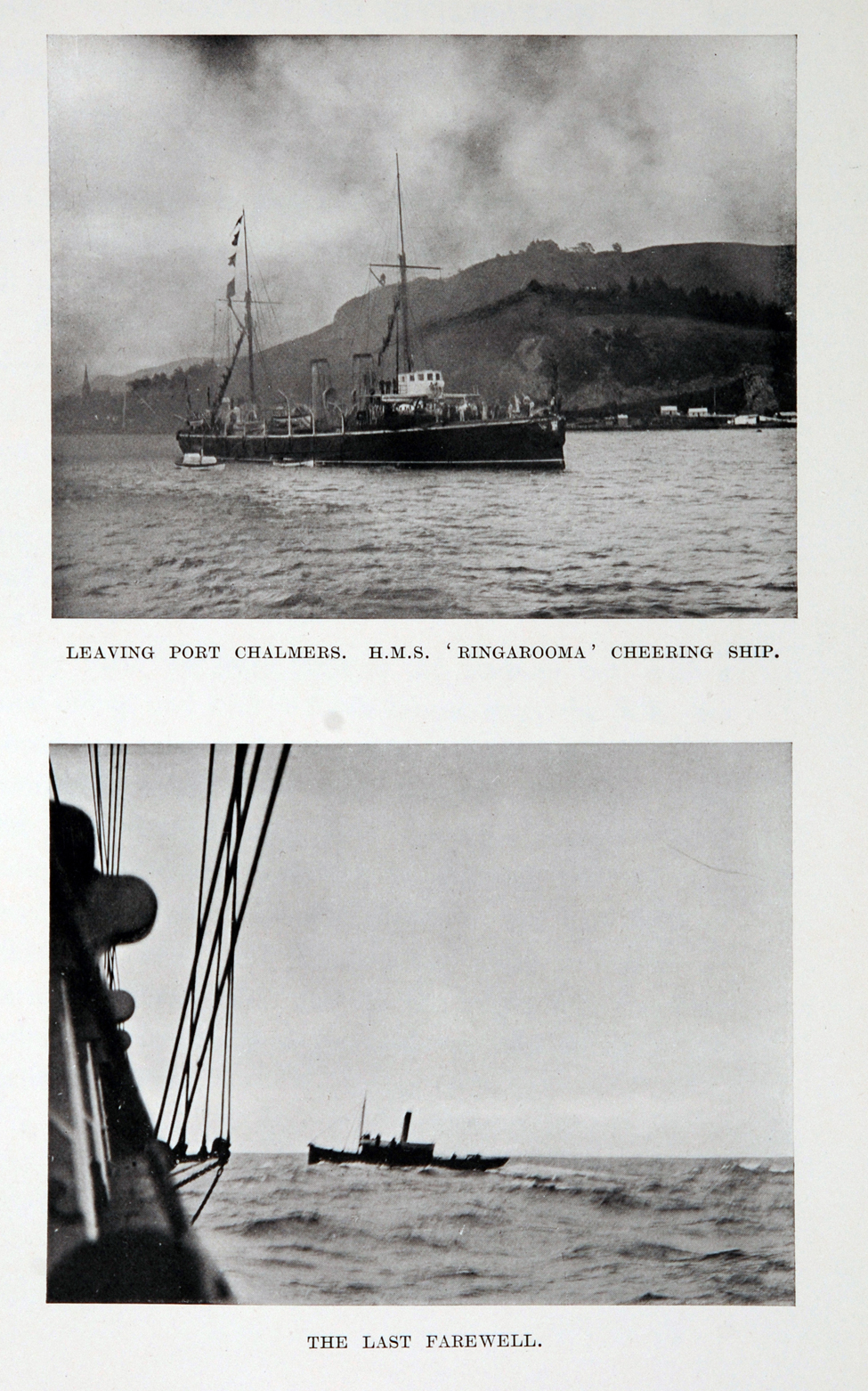
Robert F. Scott. The Voyage of the 'Discovery'. London: Smith, Elder & Co., 1905. Two volumes.
The Discovery sailed for Antarctica on Christmas Eve Day 1901. After leaving port, Scott sent a message to the then mayor of Port Chalmers, John Mill, a stevedore and coal merchant who supplied the Discovery expedition with free coal. Scott’s note read:
‘For your generosity to the expedition and your kindness to us all may I send you a last word of most grateful thanks? We leave with the highest remembrance of New Zealand and its people, Yours ever sincerely, Robert F. Scott, master’.
Seeing the New Zealand coastline disappear into the distance, Scott wrote in his journal that ‘the blue outline of friendly New Zealand was lost to us in the ... twilight’.
As Ian Church records, ‘Besides discovering King Edward VII Land, the expedition had examined the coast of Victoria Land and the Ross Ice Shelf. So much information had been collected that evaluation and publication were far from complete when Scott made his second expedition in 1910’ (Church 17). During their two years on the Antarctic Continent, Scott and Shackleton also made an ascent in a tethered hydrogen balloon and, along with Edward Wilson, made a gruelling fifty-nine day trek into the southerly Antarctic interior.
Ian Church. Last Port to Antarctica: Dunedin and Port Chalmers: 100 years of Polar Service. Dunedin: Otago Heritage Books, 1997.
